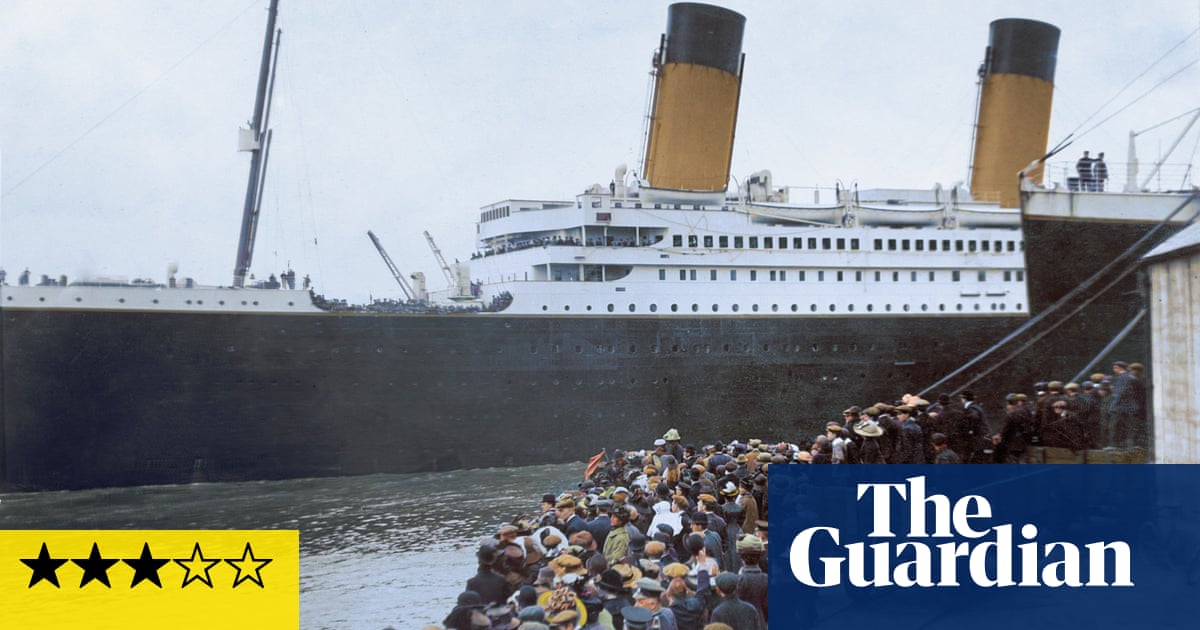The Titanic was huge and it was huge news; from its inception to its watery grave, the ocean liner – at the time the largest moving object on the planet – had an outsized influence on the world. That significance was only cemented by James Cameron’s epic Hollywood dramatisation of the disaster, which became the first billion-dollar grossing film upon its 1997 release (it’s still pretty popular, going by the Netflix numbers), and bestowed the sinking with a slightly deadening ubiquity.
Yet you’d be forgiven for wondering whether the makers of this new series about the Titanic had ever even heard of it. Titanic In Colour, a two-part documentary, is billed as a valiant attempt to help audiences emotionally connect with the ship’s fateful voyage via specially colourised footage and photographs. The central conceit is that monochrome imagery distances us from history; seeing the past’s true colours makes it less abstract, more engaging, more real.
In general, the idea makes sense – although this programme does skate disconcertingly close to suggesting that the humble TV-viewing public might genuinely think the past was completely colourless. Yet in this specific case there’s a small issue: who on earth thinks of the Titanic in black and white? Surely the tragedy is now synonymous with the doomed romance of Kate Winslet’s Rose and Leonardo DiCaprio’s Jack – high point: him drawing her naked on a sofa; low point: her prizing his frozen hand off hers while clinging to a floating door – which was carried out entirely in colour. In fact, the Titanic is one of the only events from the first half of the 20th century that isn’t merely a dimly recalled textbook entry in the public imagination.
What makes Titanic In Colour’s premise even odder is that it rarely lives up to its title. We do see a colourised fragment of film of the unfinished ship, revealing its red, black and white exterior. There are also a couple of colourised photographs of people on board, taken by a Jesuit theological student, Francis Browne, who disembarked in Ireland before that fateful transatlantic journey. But the vast majority of the imagery – especially of the interior – actually comes from the Titanic’s non-identical twin, the Olympic (we even see the latter’s dining room salvaged and reconstructed in an Alnwick hotel). Elsewhere, there are museum-owned clothing and shoes worn by survivors, which are – of course! – in colour too (although just barely, in the case of a rather dull brown coat).
The documentary’s fixation on pigmentation reaches a nadir relatively early on when we are forced to study a fragment of the ship’s green carpet – kept by an employee as a pre-sailing souvenir – for three very long minutes. There are a lot of interesting things about the Titanic; the carpet isn’t one of them. In fact, it feels slightly perverse to be focusing so keenly on the flooring. We learn that in one meeting about the ship’s interior, two hours were spent discussing the carpets for the first-class cabins, and 15 minutes on the lifeboats. And we know how that turned out.
Obviously, you can’t make a documentary about the Titanic without a USP, but the Titanic In Colour is far more compelling when freed from its blinkered premise. The ship was a nexus for so many different facets of history, caught in the middle of a web of enthralling socio-political context. This retelling of its inception and creation is peppered with nods towards larger topics: we get a tantalising insight into how the ship captured the subtle but important shift from the Victorian to Edwardian age (Churchill called this new period the dawn of a “Titanic world” in 1909); how ocean liners represented nations on the world stage and their part in pre-passport immigration; how the ship was built in Belfast amid the Home Rule movement. Expert talking heads even manage to tie anti-colonialism sentiment in the UK into the story.
Even the discussion of more technical areas – such as the ship’s power sources – benefits from the inclusion of only the most intriguing facts. Historians are joined by survivors and their children, who must have been pumped for memories in the public eye dozens of times before, yet their filleted insights – such as the fact that one staff member disembarked when he discovered his siblings onboard, because brothers on a ship is bad luck – are captivating.
Which is to say that, despite its questionable premise, Titanic In Colour is crammed to the rafters with weird and wonderful detail. It also does a sterling job of explaining why the ship was an era-defining cultural behemoth even before it sank. The Titanic ends up being the perfect catalyst for a fascinating and far-reaching history lesson – whatever colour the carpet was.
after newsletter promotion
